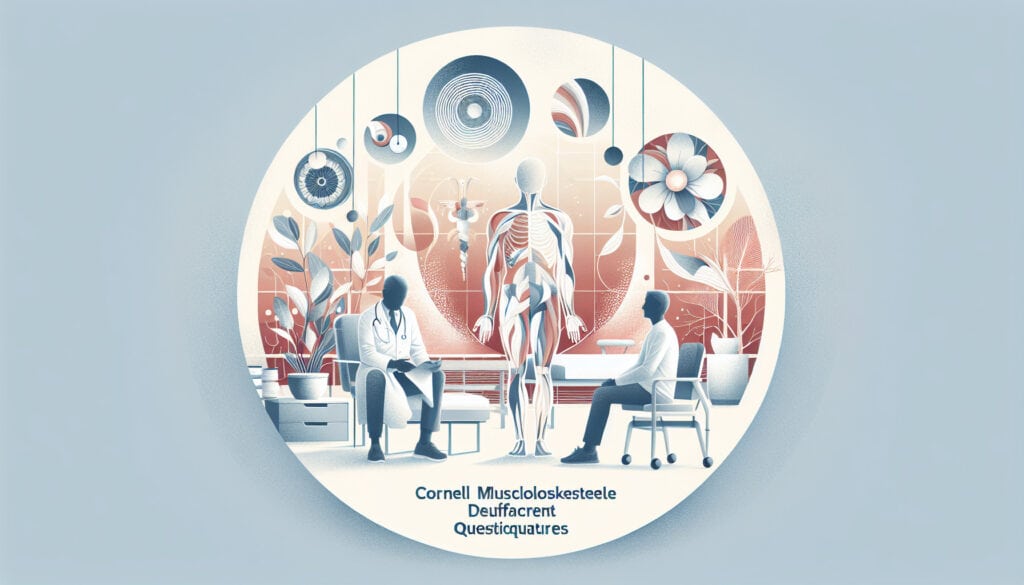A self-administered survey tool used to collect data on the location, frequency, and severity of musculoskeletal discomfort experienced by individuals.
- Metodologías: Ergonomía
Cornell Musculoskeletal Discomfort Questionnaires

Cornell Musculoskeletal Discomfort Questionnaires
- Ergonomía, Ciencias de la Salud, Human Factors, Ingeniería de factores humanos (HFE), Mejora de procesos, Control de calidad, Gestión de calidad, Gestión de riesgos, Seguridad
Objetivo:
Cómo se utiliza:
- Employees or study participants are given a diagram of the human body and asked to shade in areas of discomfort and rate the severity and frequency. It is widely used in ergonomic surveillance and research.
Ventajas
- Easy and inexpensive to administer to large groups, provides standardized data for tracking trends over time, helps in the early identification of potential musculoskeletal issues.
Contras
- Data is subjective and relies on self-reporting, does not identify the cause of the discomfort, and its reliability depends on the participant's memory and interpretation.
Categorías:
- Ergonomía, Recursos Humanos, Gestión de riesgos
Ideal para:
- Screening a workforce for the presence of musculoskeletal symptoms to identify high-risk jobs or departments.
The Cornell Musculoskeletal Discomfort Questionnaires (CMDQ) can be applied effectively in various contexts such as manufacturing, healthcare, office environments, and construction, where ergonomic risks are prevalent. During the planning or evaluation phases of workplace design or job task analysis, ergonomists and safety professionals can utilize the CMDQ to assess employee discomfort levels, which aids in pinpointing specific job roles or departments that may require ergonomic intervention. It serves as a preliminary screening tool before implementing in-depth ergonomic assessments or interventions, thus conserving resources while providing actionable data. Ideal participants for this methodology include a cross-section of the workforce, encompassing different roles and levels of experience, to ensure varied ergonomic risk exposure is recorded. As teams continue to collect data over time, companies can track trends in discomfort and proactively address ergonomic improvements leading to enhanced employee well-being and potentially reducing workers’ compensation claims. The ease of administering the CMDQ allows companies to conduct routine surveys, fostering a culture of safety and health that engages employees in their own ergonomic awareness and encourages feedback on workplace conditions. In academia, the CMDQ may be employed in research studies aimed at understanding the ergonomic impacts of various workplace interventions, thereby contributing to a broader knowledge base that informs best practices across industries.
Pasos clave de esta metodología
- Distribute the Cornell Musculoskeletal Discomfort Questionnaire to participants.
- Instruct participants to shade areas on the body diagram where they experience discomfort.
- Ask participants to rate the severity of their discomfort on a predefined scale.
- Request participants to indicate the frequency of discomfort episodes.
- Compile data from all participants for analysis.
- Identify patterns of discomfort across jobs or departments.
- Analyze data to highlight high-risk areas for musculoskeletal issues.
- Compare findings against baseline data or previous assessments.
Consejos profesionales
- Integrate qualitative follow-up interviews to complement the questionnaire data, allowing participants to elaborate on their discomfort.
- Implement periodic reassessment using the questionnaire to track changes in discomfort patterns and validate ergonomic interventions.
- Use the data aggregated from multiple departments to benchmark against industry standards and identify best practices for ergonomic improvements.
Leer y comparar varias metodologías, recomendamos el
> Amplio repositorio de metodologías <
junto con otras más de 400 metodologías.
Sus comentarios sobre esta metodología o información adicional son bienvenidos en la dirección sección de comentarios ↓ , así como cualquier idea o enlace relacionado con la ingeniería.
Contexto histórico
1986
(si se desconoce la fecha o no es relevante, por ejemplo "mecánica de fluidos", se ofrece una estimación redondeada de su notable aparición)

Publicaciones relacionadas
Programa Maestro de Producción (MPS)
Personalización masiva
Embudo de marketing
Auditoría de marketing
Índice MAPO (Movimiento y Asistencia de Pacientes Hospitalizados)
Planificación de recursos de fabricación (MRP II)